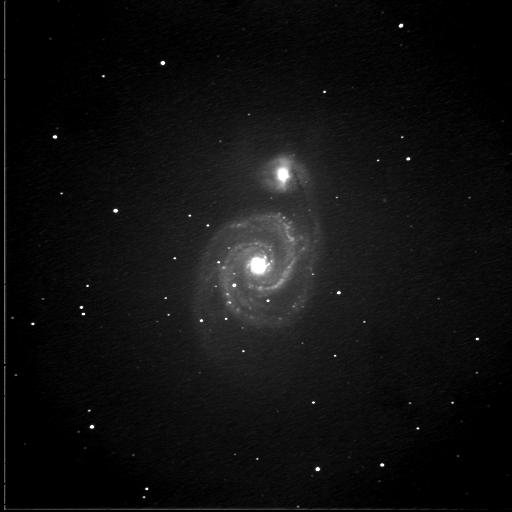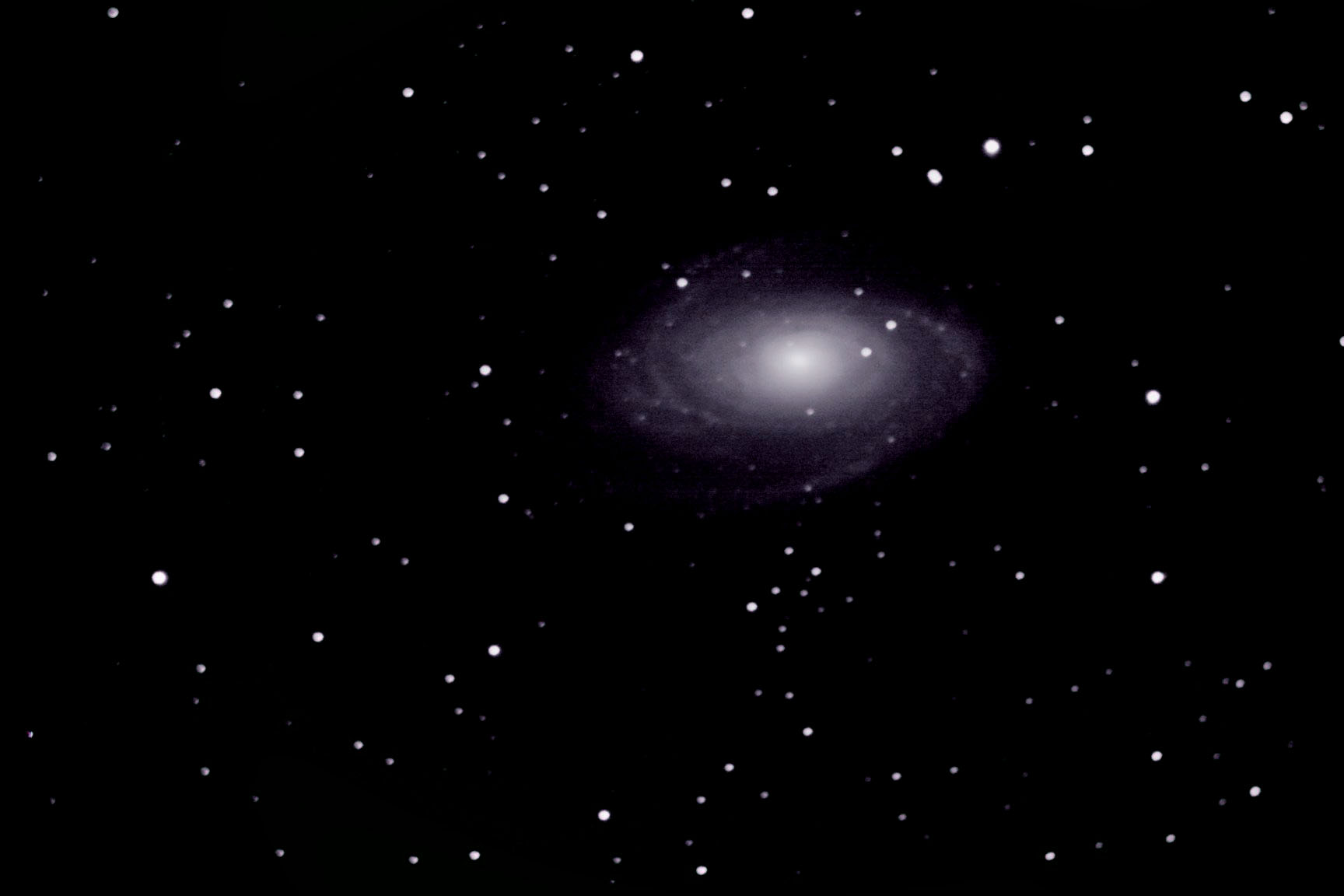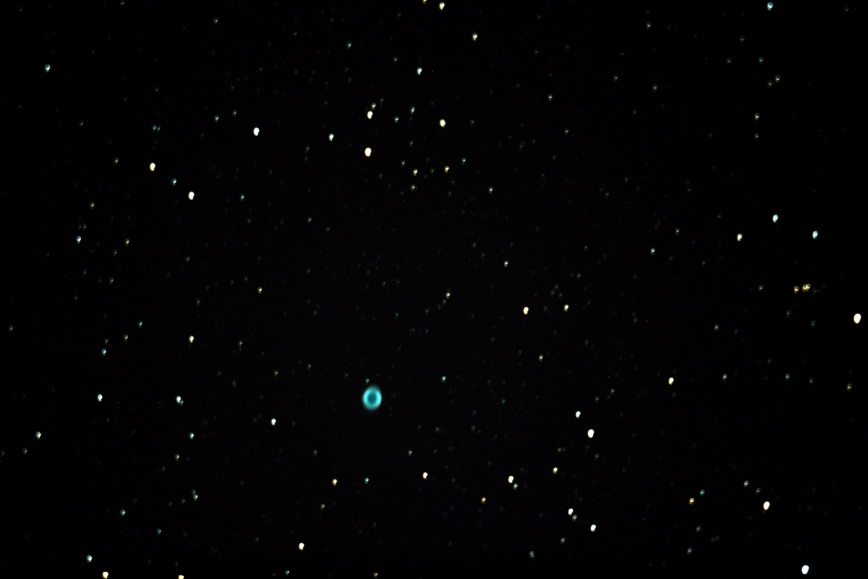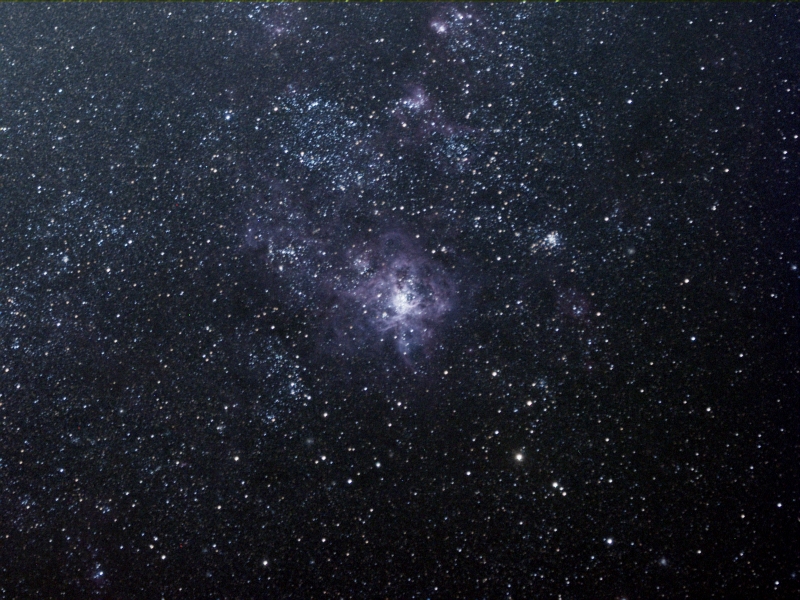Given a very dark clear night, a good pair of binoculars and a set of sharp eyes, it’s possible that you may just be able to see a faint fuzzy blog under the handle of the plough in Canes Venatici. This is ARP 85, the galaxy pairing of Messier 51 & NGC 5195. M51, also known as The Whirlpool, is one of the finest examples of a spiral galaxy, discovered by Lord Rosse in 1845 who first recognised the spiral structure using his 72 inch reflecting telescope at Birr Castle, Ireland.
For many years it was believed that NGC 5195 was merely on the same line of sight as M51 and further away, however, simulations suggest that NGC 5195 first passed through the disk of M51 some 500 – 600 million years ago travelling towards us before another encounter 50 to 100 million years ago took it back through the spiral. The resulting gravity waves have triggered areas of star formation in the spiral arms of M51.
About 23 million light years away, M51 has a diameter of 76,000 light years and a total mass of about 160 billion suns.
Imaged on GRAS-001, this is a stack of eleven two minute exposures, processed in IRIS.









